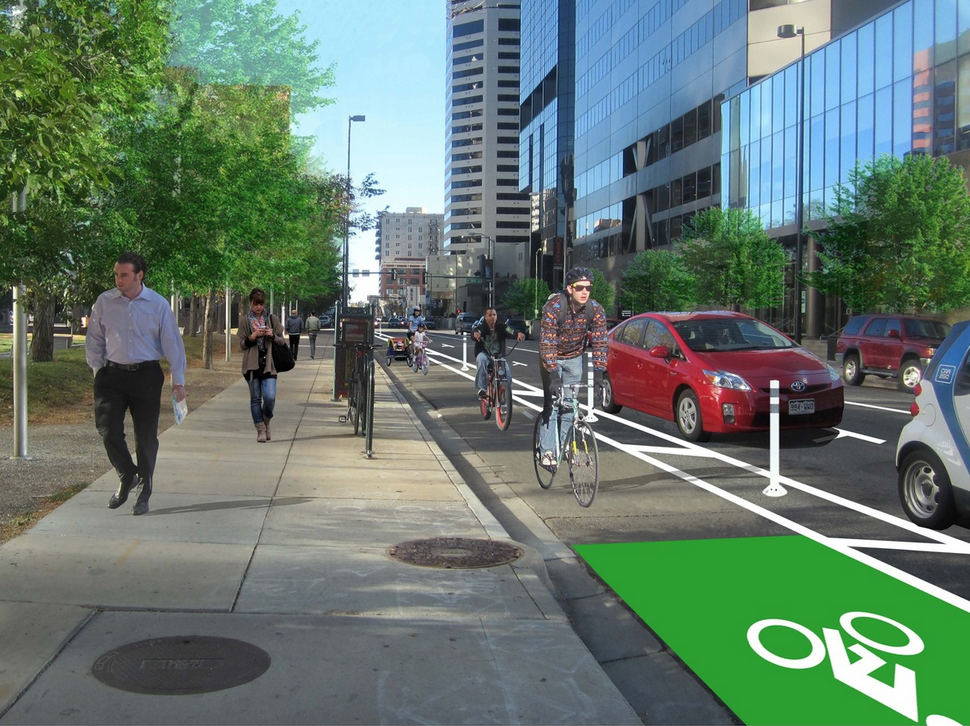Public Bike Infrastructure Shouldn’t Have to Rely on Private Money

Bloomberg published a national story yesterday about crowdfunding public infrastructure projects to ensure government bureaucracies actually implement them. The tactic is becoming more common, Amanda Albright reports, “at a time of waning city budgets and interest in funding projects.”
Headlines in Denver lately boast of the booming local economy and the flood of development (read: bigger tax base). Mayor Michael Hancock, for his part, rarely passes up the opportunity to reinforce them. But based on Albright’s piece, which highlights the impending Arapahoe Street protected bike lane as a privately funded public project, Denver needs a nudge from the private sector to build basic public infrastructure:
The Downtown Denver Partnership used Ioby to raise $36,085 for a protected bike lane expected to open this fall, says Aylene McCallum, the director of the partnership’s downtown environment division. She says the project garnered significant interest and the selection, design, and construction of the project will take one year compared with three or four years for other buffered or protected bike lanes in the area.
Critics of the project say the city should have funded the project with the tax dollars residents are already paying for such projects, McCallum says. “It was important to explain that we didn’t see this as an ongoing funding approach to fund infrastructure,” she says. “We saw it as an opportunity to kick-start, if you will, a specific project in downtown Denver to demonstrate to the city that there was broad support for it.”
The Urban Institute’s [Tracy] Gordon points to another potential problem with the model. “A lot of the things we’ve talked about seem like amenities for affluent areas,” she says. “You have to wonder about that desperately needed capital improvement across town, where perhaps the neighbors aren’t as well mobilized.”
DDP led the entire financing mission, but its crowdfunding campaign covered just a portion of the bike lane’s cost. The lion’s share ($85,000) came from the Gates Family Foundation, while the Downtown Denver Business Improvement District threw in $35,000. Denver matched the fundraising at $35,000.
The Arapahoe Street bike lane costs less than half of 1 percent of the Department of Public Works’ $47 million transportation budget, yet it will instantly provide thousands of people with a safe way to traverse downtown. It’s a good project, but the fact that it takes pressure from the private sector to get it done implies that the Hancock Administration is reactionary, rather than visionary, when it comes to enhancing connectivity in the city. Would the city have moved forward with this infrastructure had it not lucked out?
As McCallum and Gordon point out, relying on crowdfunding is not a dependable financing mechanism. Nor would it be equitable to always prioritize public projects based on the leanings of private money. On the other hand, there’s a sure-fire, long-term way for Hancock to leverage Denver’s supposedly waning tax dollars without relying on the private sector: As the 2016 budget is crafted, commit to spending them on low-cost, high-impact projects.


